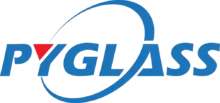Tired of inconsistent baking results that eat into your profits? Choosing between glass and metal baking pans may seem minor—but it directly impacts product quality, production efficiency, and operating costs. The wrong choice leads to waste, staff frustration, and disappointed customers.
The key difference lies in how they transfer heat: Metal pans are conductors, heating and cooling quickly for crisp edges and even browning. Glass pans are insulators—they heat up slowly but retain heat longer. Ideal for casseroles and acidic dishes, but risky for delicate cakes.
With over 15 years in the glass manufacturing industry, I’ve seen bakeries and food brands struggle with this decision. Choosing the right bakeware isn’t about the initial cost—it’s about creating a stable, efficient production line that delivers consistent, high-quality output. This guide is for you—the purchasing manager or bakery owner—who needs to make the smartest possible decision. Let’s get started.
Why Does Everything Start With How Bakeware Manages Heat?
Still battling burnt edges and undercooked centers? That common issue often comes down to one thing: how your pan handles heat.
Glass is an insulator—it heats slowly and retains warmth. Metal is a conductor—it heats and cools quickly. This thermal behavior directly influences bake time, browning, and final texture.
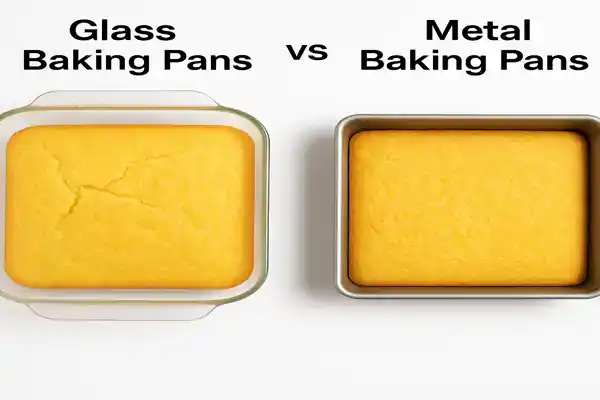
As a purchasing manager, you’re not just buying a pan—you’re buying control over one of the most important variables in your production line: heat. Let’s break it down into three simple but powerful scientific principles I’ve explained to hundreds of clients over the years.
Heat Conduction: How Fast Heat Transfers
Heat conduction 1{#ref-1} is how fast heat travels through a material. Like when a metal pole feels colder than wood on a winter day—it pulls heat from your hand quickly.
- Metal pans (especially aluminum): Excellent heat conductors that transfer oven heat efficiently to batter or dough. Perfect for products that require a quick rise and set, like cakes and bread. Fast heat ensures leavening agents 2{#ref-2} activate before the crust forms.
- Glass pans: Heat more slowly and more gently. That’s a drawback for some products—but a big advantage for others, as we’ll discuss later.
Heat Retention: The “Inertia” Effect After Baking
How long does a pan stay hot after you remove it from the oven?
- Metal pans: Cool quickly. This helps stop the baking process immediately and increases turnaround time—ideal for commercial efficiency.
- Glass pans: Retain heat longer. That extended warmth keeps products baking even after they leave the oven. This can dry out a sponge cake—but for a lasagna or crisp, it keeps food hot and ready for service.
Material Reactivity: Flavor Impact
Does the material affect the flavor of the food?
- Metal pans: Especially untreated aluminum, can react with acidic foods (like tomatoes, citrus, or fruit fillings). This may cause off flavors or pan discoloration. Many modern metal pans are nonstick coated or anodized to reduce this risk 3{#ref-3}.
- Glass pans: Inert and non-reactive. Safe for baking and storing acidic foods without affecting flavor or safety.
Understanding these three pillars—conduction, retention, and reactivity—lays the foundation for choosing the right bakeware for your product line.
| Propiedad | Glass Bakeware (Insulator) | Metal Bakeware (Conductor) |
|---|---|---|
| Conducción del calor | Slow and gentle | Fast and efficient |
| Retención del calor | Excellent (retains heat) | Lower (cools down fast) |
| Material Reactivity | Non-reactive (acid-safe) | May react with acids (unless coated) |
Is Metal Bakeware the True Workhorse for Speed and Consistency?
Need to produce hundreds of cookies or brownies a day? In commercial baking, consistency is everything—and your baking pan is a critical part of that process.
Yes—metal bakeware, especially light-colored aluminum, is the standard workhorse in most commercial bakeries. It heats up fast, bakes evenly, and cools down quickly—ensuring consistent product quality and top productivity.
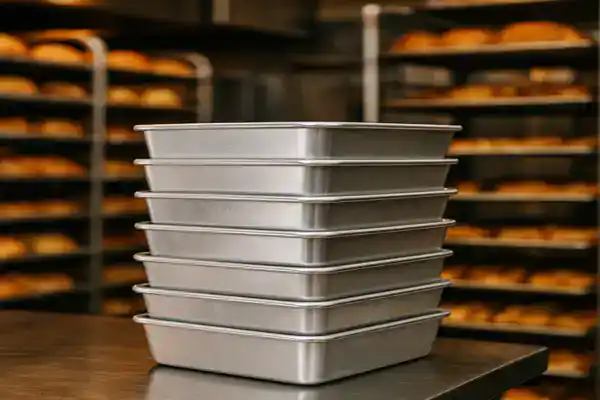
Every time I walk through a commercial bakery, metal pans dominate the shelves. It’s not by chance. They perform exceptionally well in high-volume environments where time, consistency, and durability drive profitability. Here’s why:
Even Heating Champion
Aluminum distributes heat evenly and quickly. It eliminates hot spots—the enemy of uniform baking. This directly reduces product waste and boosts quality control 4{#ref-4}.
Essential for:
- Sheet cakes: Flat tops, no doming
- Cookies: Even browning across the tray
- Brownies: Clean, sharp edges with fudgy centers
Speed and Turnaround Efficiency
Faster preheat times = faster bakes
Quicker cooling = faster reloading
Combined, this can give you multiple extra batches per day—without buying more ovens.
Durability in Commercial Kitchens
Metal pans can withstand drops, stacking, and industrial scrubbing. Even if they dent, they still work. Compared to glass, they’re more forgiving and lower risk for breakage or injury in busy commercial kitchens 5{#ref-5}.
Is Glass Bakeware the Versatile Multitool for Display and Specialty Items?
Do some of your products go straight from the oven to the display case or dining table? Then bakeware becomes more than just a tool—it’s part of the final presentation.
Absolutely. Glass bakeware is a versatile performer. It’s ideal for acidic recipes, elegant presentation, and dishes that benefit from slow, steady heat. It’s non-reactive, holds heat well, and looks beautiful on the table.
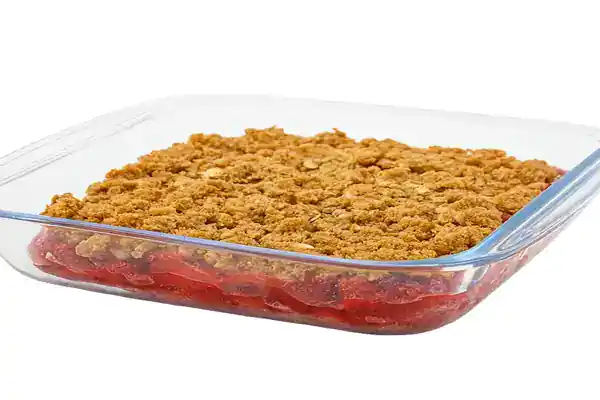
I’ve worked with cafés and boutique bakeries that prefer glass pans for visual appeal and specialty products. It performs best in scenarios where metal simply doesn’t shine.
Ideal for Hot-Holding and Presentation
Thanks to its insulation properties, glass holds heat longer than metal. Great for:
- Casseroles and gratins: Stay warm longer on buffet lines
- Fruit crisps and cobblers: Keep their texture warm for service
- Pies: Allows visual monitoring of crust color
Perfect for Acidic Dishes
Think lemon meringue pies, tomato lasagna, vinegar-marinated dishes.
Glass is completely non-reactive, so it’s perfect for acidic dishes 6{#ref-6}:
- No metallic taste
- No discoloration
- No food safety concerns
Transparency for Visual Baking Control
Being able to see the bottom of your pie or tart while it bakes eliminates guesswork—and ensures that golden brown finish. This transparency for visual baking control 7{#ref-7} is a key advantage of glass.
How to Match the Right Pan to Your Signature Products?
Just like choosing the right knife for the right job, you need the right pan for the right product.
For speed, lift, and crisping—go with metal. For gentle baking, acid-safe prep, and elegant service—use glass.
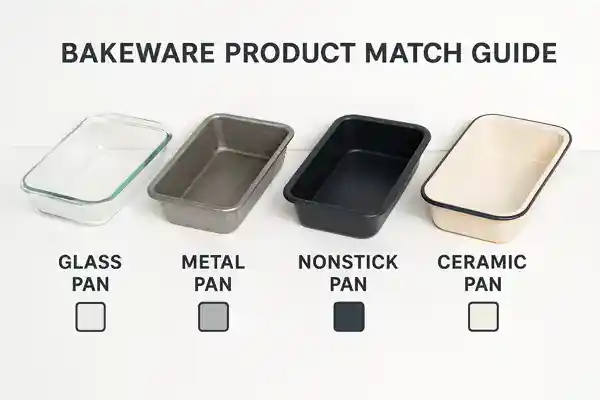
Ideal for Metal Pans:
- Layer cakes & cupcakes: Fast rise, sharp edges
- Cookies: Even bottoms, no burning
- Brownies: Crisp outside, chewy middle
Ideal for Glass Pans:
- Fruit pies: See crust color, no acid reaction
- Casseroles: Stay hot longer, oven-to-table
- Puddings/custards: Gentle bake for soft textures
Common Question: Can You Bake a Cake in a Glass Pan?
Yes—but not ideal for commercial baking. Glass heats slower and retains heat longer. This increases the risk of burnt edges and dense centers.
If using a glass pan to bake a cake:
- Reduce oven temp by 25°F (15°C)
- Add 5–10 minutes bake time
- Let the cake cool longer before unmolding
| Categoría de productos | Recommended Pan | Razón |
|---|---|---|
| Layer Cakes | Light Metal | Quick heat for proper rise |
| Cookies | Light Metal | Even baking, no over-browning |
| Brownies | Light Metal | Crisp edges, soft centers |
| Fruit Pies | Vidrio | Transparency + acid resistance |
| Lasagna/Casserole | Vidrio | Retains heat, display-friendly |
| Puddings/Custards | Vidrio | Gentle baking, prevents curdling |
Does Color and Coating Really Impact Baking Results?
Material aside, the pan’s color and surface make a big difference too.
Yes. Dark pans absorb more heat and bake faster. Light-colored pans reflect heat and bake more gently. Surface coatings affect release, browning, and lifespan.
Color Science: Dark vs Light
| Pan Color | Heat Behavior | Best Use Cases |
|---|---|---|
| Dark Finish | Absorbs heat quickly | Crusty bread, crispy edges |
| Light Finish | Reflects heat | Delicate cakes, even browning |
Coating Differences:
- Nonstick Coating 8{#ref-8}: Easy release, wears with time
- Raw Aluminum: Long-lasting but requires greasing
- Glass Surface: Smooth, naturally nonstick with light oiling
💡 Tip: One client reduced complaints by 40% just by switching from dark to silver pans. Sometimes, color alone solves the problem.
What Are the 4 Most Important Factors in Bulk Bakeware Purchasing?
Beyond performance, you must think like a manager.
You’re buying not just equipment—but long-term ROI. Assess four things: Cost, Efficiency, Durability, and Maintenance.
| Factor | Glass Bakeware | Metal Bakeware |
|---|---|---|
| Purchase Cost | Higher upfront, longer lifespan | Lower upfront, may replace more |
| Production Speed | Slower bake/cool time | Fast baking and reloading |
| Durabilidad | No warping, but fragile | Tough, but may dent/scratch |
| Cleaning Ease | Easy to clean, dishwasher safe | May require handwash or care |
For volume, speed, and consistency: go metal.
For presentation, flavor integrity, and acid-resistance: go glass.
Final Advice: How to Build a Smarter Bakeware Portfolio?
This is not a “choose one and forget the other” decision.
The smartest bakeries build a mixed bakeware strategy.
The 80/20 Investment Rule:
- 80% Metal Bakeware: Use for high-frequency core items like cakes, cookies, and bread
- 20% Glass Bakeware: Use for pies, casseroles, puddings, or oven-to-table service
This gives you the speed of metal—and the finesse of glass—without compromise. Building a mixed bakeware strategy 9{#ref-9} ensures you are prepared for any product while maximizing your long-term ROI 10{#ref-10}.
Conclusión
Choosing between glass and metal bakeware is more than preference—it’s a strategic decision.
Metal pans give you speed, strength, and standardization for everyday high-output baking.
Glass pans give you flavor protection, presentation, and flexibility for premium or acidic products.
Don’t choose sides—choose smart matching. The right pan for the right task gives you better product quality, lower waste, happier customers—and better returns.
Notas a pie de página
1. An in-depth comparison of how different bakeware materials, including glass and metal, conduct heat. ↩︎
2. Learn about the science of chemical leaveners and how they make baked goods rise. ↩︎
3. Discover what hard-anodized cookware is and how it prevents reactivity with acidic foods. ↩︎
4. Official FDA guidance on HACCP principles for ensuring food safety and quality control. ↩︎
5. A comprehensive guide to designing efficient and safe layouts for commercial kitchens. ↩︎
6. A list of common acidic foods and why non-reactive cookware is important for them. ↩︎
7. Explore a collection of high-quality glass bakeware perfect for monitoring baking progress visually. ↩︎
8. An overview of nonstick cookware, explaining its safety, types, and proper care instructions. ↩︎
9. Browse a wide selection of bakeware to build a versatile portfolio for any commercial need. ↩︎
10. A clear guide explaining how to calculate Return on Investment for business purchases. ↩︎
